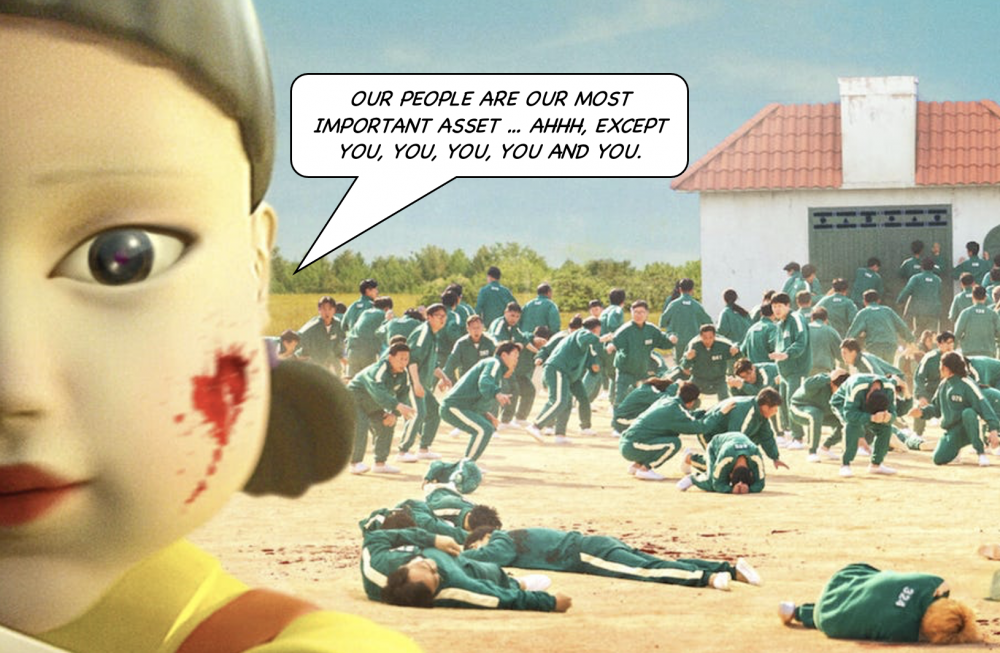Reduction in force: Difference between revisions
Amwelladmin (talk | contribs) No edit summary |
Amwelladmin (talk | contribs) No edit summary |
||
| (5 intermediate revisions by the same user not shown) | |||
| Line 5: | Line 5: | ||
Usually, therefore, it is a means of taking out a swathe of mid-ranking [[subject matter experts]]. We of the [[Morlock|guild of mid-ranking subject matter experts]] find this fact rather ''chafing'', to say the least. | Usually, therefore, it is a means of taking out a swathe of mid-ranking [[subject matter experts]]. We of the [[Morlock|guild of mid-ranking subject matter experts]] find this fact rather ''chafing'', to say the least. | ||
We have a view that an organisation which needs a periodic [[reduction in force]] | We have a view that an organisation which needs a periodic [[reduction in force]] is not properly managing its human resources month-by-month. | ||
the JC has a view that [[system redundancy|systemic redundancy]] in a [[complex]] organisation is, at some level, quite a good thing; a [[reduction in force]] is an ''elimination'' of redundancy, and is therefore more fraught than it should be. Elimination of ''superfluous'' redundancy is one thing, but over what period should we measure superfluity? If [[Credit Suisse]] is any guide, it is [[Archegos|something like ''250 years'']]. | |||
{{sa}} | {{sa}} | ||
*[[System redundancy]] | |||
*[[Lateral quitter]] | |||
*[[Mediocrity drift]] | *[[Mediocrity drift]] | ||
*[[Performative governance]] | *[[Performative governance]] | ||
*[[La Vittoria della Forma sulla Sostanza]] | *[[La Vittoria della Forma sulla Sostanza]] | ||
{{ref}} | {{ref}} | ||
Latest revision as of 08:54, 1 August 2023
|
The Human Resources military-industrial complex
|
Reduction in force
rɪˈdʌkʃən ɪn fɔːs (n.)
(Also “RIF”)
The permanent removal of headcount — mass redundancy — usually targeted at that sweet spot in the organisation whose own reports aren’t so useless they can’t get by without meaningful supervision, and who aren’t so senior that they get to make decisions about who should be subject to a RIF.
Usually, therefore, it is a means of taking out a swathe of mid-ranking subject matter experts. We of the guild of mid-ranking subject matter experts find this fact rather chafing, to say the least.
We have a view that an organisation which needs a periodic reduction in force is not properly managing its human resources month-by-month.
the JC has a view that systemic redundancy in a complex organisation is, at some level, quite a good thing; a reduction in force is an elimination of redundancy, and is therefore more fraught than it should be. Elimination of superfluous redundancy is one thing, but over what period should we measure superfluity? If Credit Suisse is any guide, it is something like 250 years.
See also
- System redundancy
- Lateral quitter
- Mediocrity drift
- Performative governance
- La Vittoria della Forma sulla Sostanza
